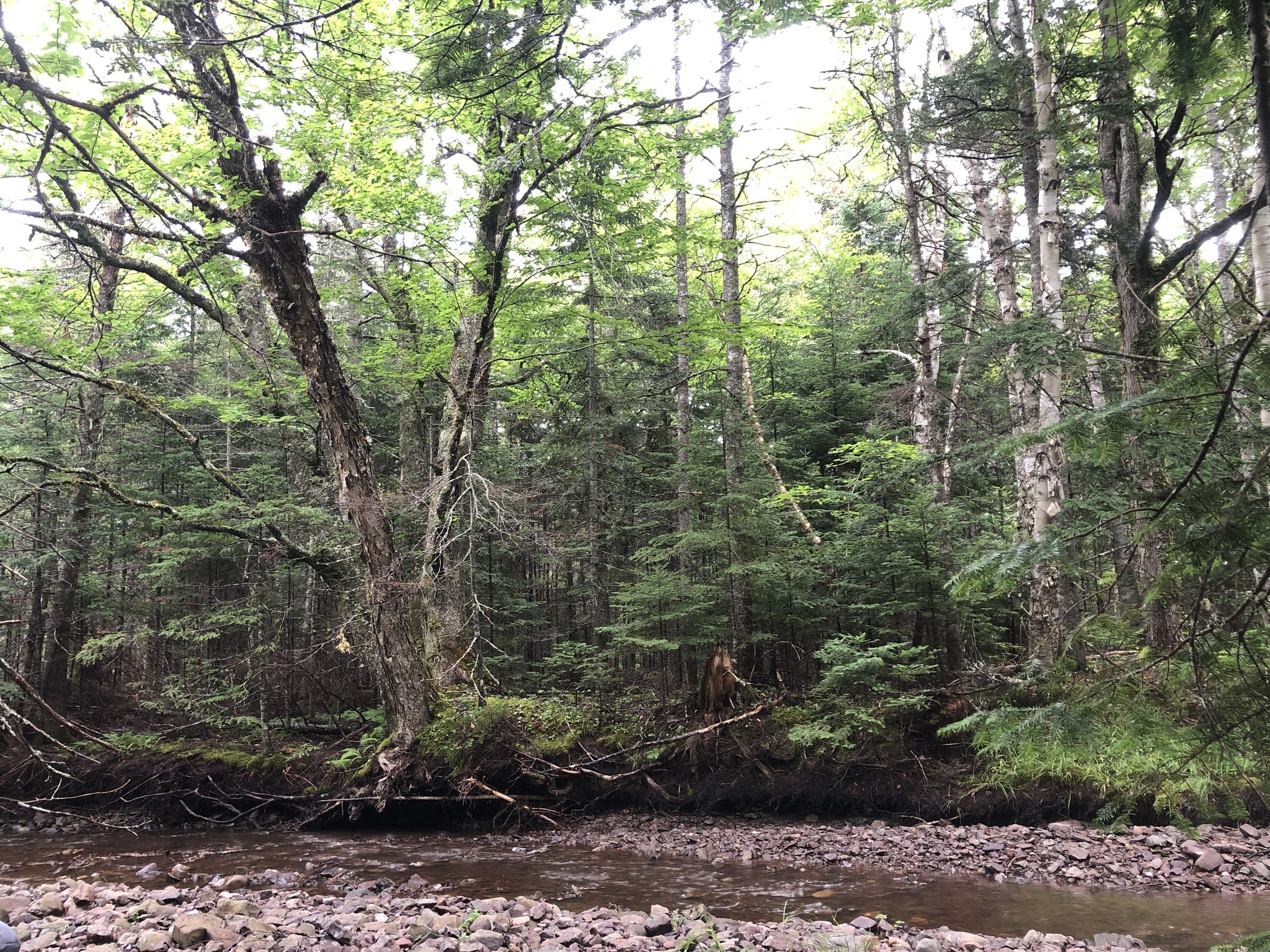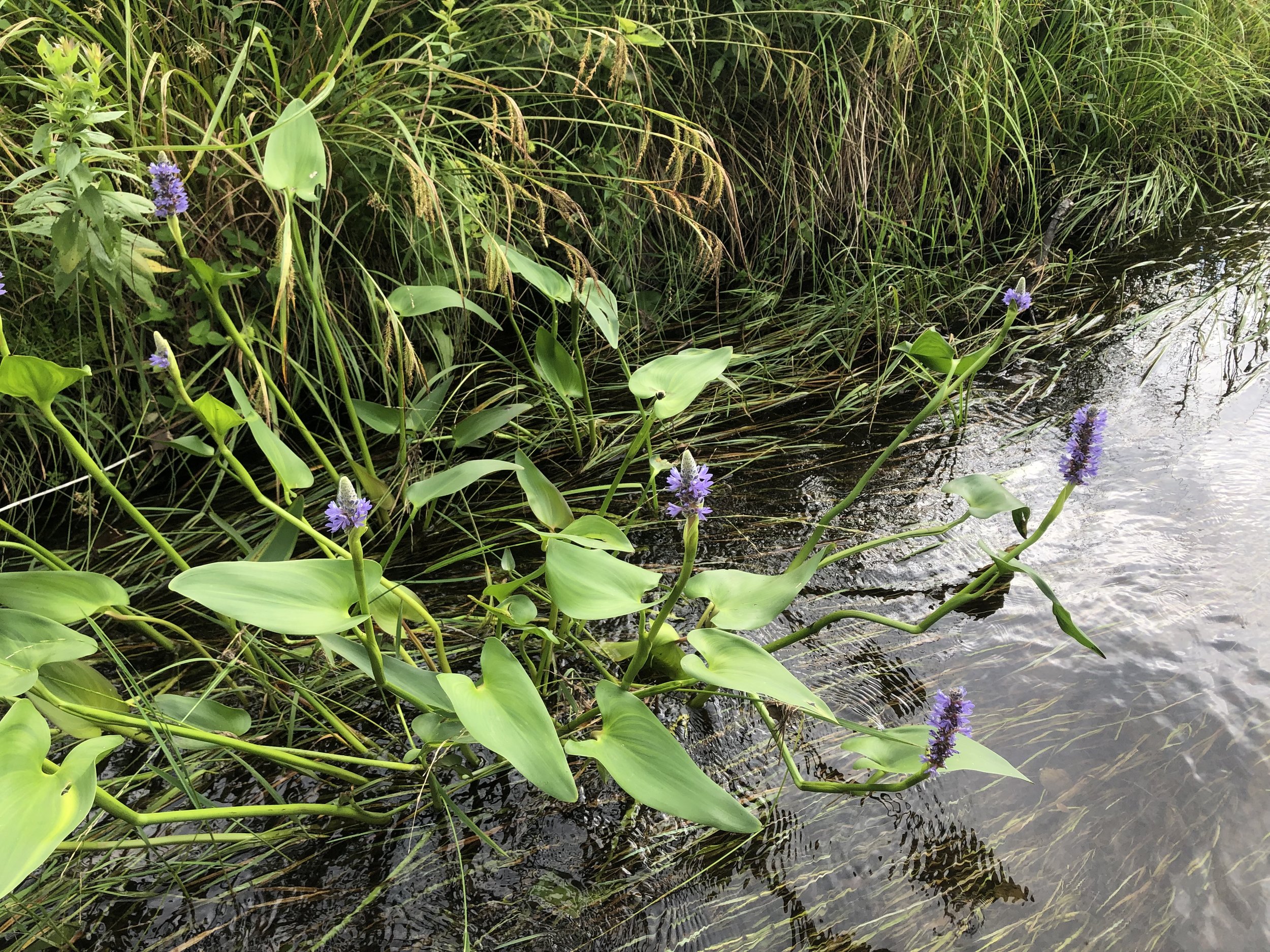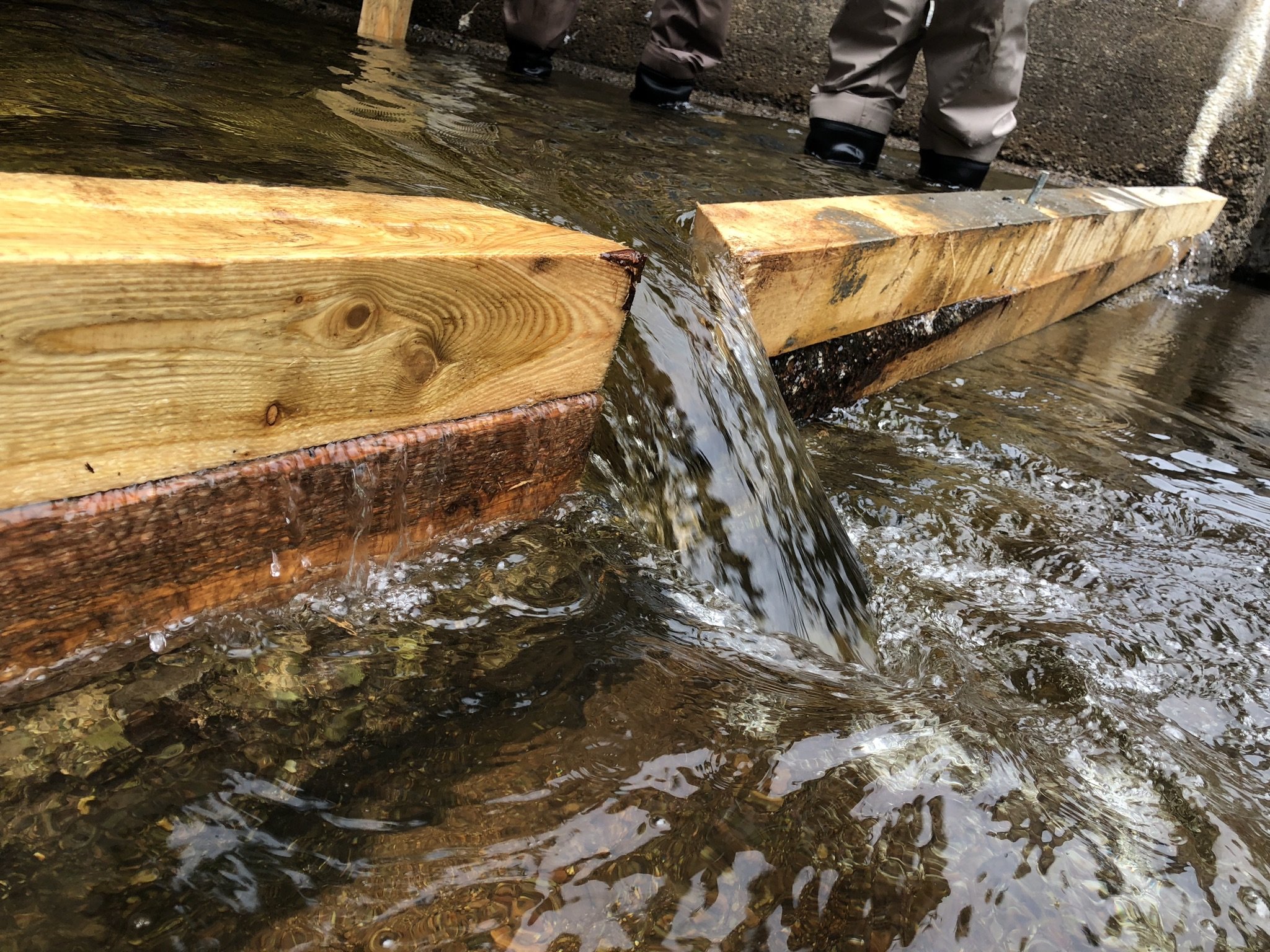
Stream Restoration
30 years of restoration work from the river bed to the upper riparian zone.
ACAP has been improving stream habitat quality for more than two decades. We plan on a watershed level and take an ecological approach to our projects which, thanks to great partnerships, have reached all over Unama’ki.
Ecological Approach
We take an ecological approach and work to apply both lenses of the two-eyed seeing (etuaptmumk) approach in our work by respecting all life forms and learning traditional ways of working with the land and water.
Although many of the stream restoration methods are designed with fish in mind, healthy oxygenated streams are generally beneficial to all organisms. One example of potential detriment to the ecosystems in restoration work is sedimentation kicked up when installing structures. Riverbeds are full of life and particularly important organisms living at the bottom of rivers are freshwater mussels. These little filter feeders clean streams and lakes at an impressive rate, siphoning the water column for food and increasing water quality by pulling out particulate matter. Digging up the stream bed to install digger logs, or many of our other restoration methods can temporarily introduce sediment to the water column or displace mussels. That's why ACAP created a video about how to protect mussels while doing this work.





